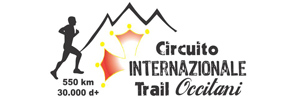From Pont St Esprit to Le Vigan, a watershed between two worlds
236 Km 11 days
The landscape of the Cevennes is one of vast horizons and clear blue skies with white clouds dotting meadowlands with their sharp shadows. These are the airy spaces of the Cevennes, which can be reached through aerial passages along the gorges of Ardèche and Chassezac, the last bastion of the Midi at the feet of the Massif Central. In a journey which almost totally overlooks the Mediterranean Sea, the Cevennes allow forays in more continental landscapes often beyond the watershed which divides those rivers descending to our sea from the ones that turn away from it, preferring the great Atlantic north. But the visitors’ attention is mainly drawn to history. In the XVII century the population of the Cevennes made a clear choice: they adhered to Calvin’s reform and they also turned their backs on Rome and the Latin world. Their choice brought a long series of persecutions and religious wars to these mountains. Nowadays, it is still striking to see the austere character of settlements at the heart of which a temple is always found: void of images, gold and decorations, but welcoming in its severe bourgeois simplicity. Towns such as Le-Bleymard or Pont-de-Montvert are real jewels made of stone, often the same granite which forms the structure of the massif and which emerges in the wide ridge of Mont Lozère. The department named after this mountain, boasts a record in France: the lowest population density, being fifteen inhabitants per square kilometre. Everybody has left, emigrated. The First World War started it by taking away the youngest and strongest men, then, between the two wars, the factories in the north and the specialized agriculture in the Midi did the rest. The second post-war period completed the depopulation process with the consequent loss of many traditional activities. Nowadays, an inversion of the trend can be witnessed with the settling of many “néo”, neo-residents on these mountains. Néos are people who leave the big cities, choosing an alternative lifestyle. Besides, the national park now has the main goal of preserving the biodiversity of an environment where the interaction between man and nature is centuries old. For this reason sustainable activities are being promoted, such as agriculture, silviculture, and outdoor tourism. There are roughly 400 agro-pastoral farms in the most protected area of the park: the charm of these lands nowadays still lies in hiking on the dralha, the track for transhumance along the barbed wire fences which vanish into the distance.
Stages:
21 – From Pont-St-Esprit to Aiguèze
22 – From Aiguèze to Labastide-de-Virac
23 – From Labastide-de-Virac to Comps
25 – From Les Vans to Villefort
26 – From Villefort to Le-Bleymard
27 – From Le-Bleymard to Le-Pont-de-Montvert
28 – From Le-Pont-de-Montvert to Florac
29 – From Florac to Barre-des-Cévennes



